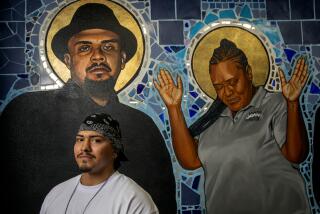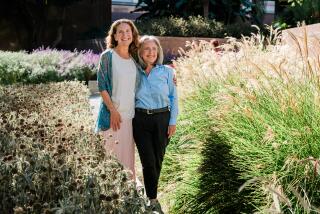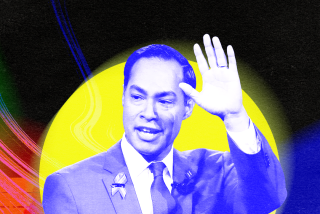Leaders Follow Shared Spirit
At a recent breakfast to benefit the Volunteer Center of Orange County, I had the pleasure of sharing the podium with president Brad Morrice of Irvine-based New Century Financial Corp., who spoke about philanthropy. Morrice sees the investment of voluntary support and service as a priority of good citizenship and as an essential of corporate strategy. I couldnât agree more.
My task that morning was to preview my book, âLeading by Heart,â which describes the role of nonprofit development and organizational leadership of any kind. I talked about the Orange County region and nonprofit organizations in particular. But we could have been discussing President Bush and the war on terror or Gov. Gray Davis and the California budget crisis.
From the viewpoint of nonprofit development, we as a global civic society need to change the way we think about leadership. It is more than just a personal thing, more than the high end of management, more than a skill we develop to gain power and far more than something employed by bosses.
It is something we need to learn more about.
We need to think of leadership as a self-imposed group discipline that has a strong ethic and supporting technology of its own. Leadership develops as a system that is interpersonal, based on relationships among those who are leading or following, depending on the circumstances. Leadership is an act of common spirit shared by people who have faith in something greater than themselves.
Leadership is based on a set of principles that cannot be overlooked without doing harm. These principles deal with information, participation, vision, strategy and resources. They use creative energy to produce compassion, collaborative participation to mobilize volunteers, a visionary cause to inspire sacrifice, concerted strategy to empower stewardship and connecting resources to attract philanthropy or investment in something worthwhile.
These five principles function as an organizational DNA, or ODNA, that nurtures the development of functioning groups just as human DNA guides the growth of individual people. As Lou Gerstner, architect of IBMâs remarkable turnaround of the 1990s, said: âIn the end, an organization is nothing more than the collective capacity of its people to create value.â
Amen. Just as people are the outcome of the choices they make with what they have, so are groups.
Out of an ODNA-led group culture emerges a new ethic of leadership -- pursuing the greatest good for the largest number over the longest period at the lowest cost, no matter what the purpose. These values are built from the leading technology or pressure points in the leadership system at work, whatever the specific form and function.
When we use this new understanding of leadership as a discipline, we can begin to do self-consciously and consistently what we have been doing unconsciously and inconsistently.
These findings, explained in âLeading by Heart,â come from a pilot project on nonprofit leadership at Chapman University between 1996 and 2000. The project emerged from the aftermath of Orange Countyâs largest municipal bankruptcy, which led to a loss of $200 million from the budgets of local nonprofits upon whom tens of thousands of people were counting for help.
At Chapman, 60 graduate-level students participated in five classes I led with the help of 24 professional practitioners. Their input, dozens of case studies, and the latest research from basic and applied science tempered my own experience in nonprofits over four decades. The working model we developed for nonprofit managers and leaders turned out to be applicable as well to commercial businesses and government agencies dedicated to serving their customers and constituents.
Orange County has about 1% of the national population, an economy that exceeds that percentage and philanthropy that falls short of that level. Our biggest problems are insufficient collaboration among regional leaders at all levels and a narrow vision of where the region is trying to go that leaves out much of our changing population. We share these problems with other regions. But because we have become a world capital of business entrepreneurship, our problems often are more visible than they are elsewhere.
In order for Orange County, or any other region, to improve as a place where people want to live, our leaders in every sphere and all levels of activity must learn to do leadership differently.
In the 1995 keynote speech for our project, former Disneyland President Jack Lindquist suggested that Orange County people have âgolden heartsâ for helping others, not just a golden touch for creating wealth.
But we would have to develop those skills as âcivic entrepreneursâ who are devoted to building a world-class community around the economic engine we already have.
âLeading by Heartâ shows how we can find the capacity to create that value together in our region and in our organizations.
*
Richard D. Cheshire, PhD, is the author of âLeading by Heart: Through the World of Quantum Civicsâ from Fithian Press, 2003, and director of the Institute for Voluntary Leadership.


